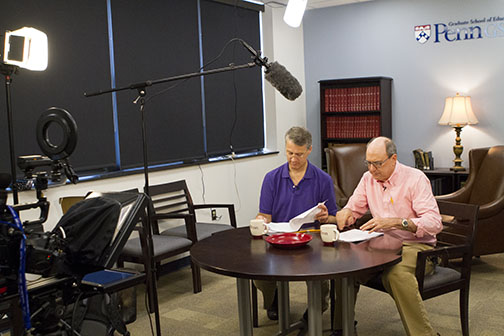Penn GSE's first MOOC tells the history of education reform
The calls for education reform in the United States began soon after the first schoolhouses opened.
The story of how the American public school system was built — as well as successful and failed efforts to change it — offers important lessons for anyone interested in improving education today.
Professors John Puckett and Michael Johanek will trace this evolution with “American Education Reform: History, Policy, Practice,” the first Massive Open Online Course (MOOC) created by Penn GSE. It grew out of a traditional course Puckett has taught to Penn GSE students.
Beginning January 26, the eight-week MOOC will take students back to the Colonial period, then move forward in history to explain the formation of common schools, the development of the high school, the professionalization and standardization of teaching, the end of segregation, the rise of teachers unions, the creation of charter schools, and more.
The professors will offer new insight on the impact of major figures like John Dewey, and reveal little known facts, such as the role the privy played in the social life of the school.
Along the way, Puckett and Johanek will show how the education system and the people shaping it have long played a major role in American life.
“Schools are always responsive to the social forces, and the political and economic contexts, of their time and place,” Puckett said.
Many people don’t realize the deep roots of various educational practices, Puckett said. Because of that, they often underestimate the effort it takes to reform schools.
“The current system is deeply entrenched,” Puckett said. “It was not casually instituted, and it won’t be easily purged.”

Penn GSE professors Michael Johanek and John Puckett worked with GSE Films Director Amitanshu Das to create videos for the online course.
For their MOOC — which is being offered through Coursera — Puckett and Johanek worked with GSE Films Director Amitanshu Das to create episodes that have a television feel and quality to them. In each of these six-to-eight minute episodes, the professors go back and forth trading details and anecdotes, and present a trove of rich visual imagery.
After each of the eight modules, students will take a quiz. Anyone interested in the course can enroll for free or pay to earn a Verified Certificate from Coursera.
